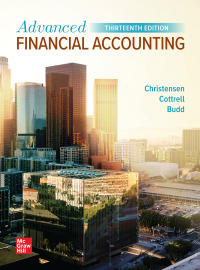 I need help with my case project.
I need help with my case project.
Bonne AOV wat eens managing cargs. ONGOING ANALYSIS PROJECT . This ongoing project began in Module 1 and continues through most of the book; even if previous segments were not completed, the requirements are still applicable to any business analysis. The goal of this module's project is to perform vertical analysis of the balance sheet and income statement, assess cash flows, and determine market capitalization, 1. Balance Sheet Analysis. Prepare a common-size balance sheet. To facilitate this, obtain the balance sheet in spreadsheet form from the SEC website at the the "Interactive Data" link on the search results page. Look for major differences over time. Some questions to consider: What are the company's largest assets? Largest liabilities? What proportion of total assets is financed by owners? (Hint: Compare with total equity.) What proportion of total assets is financed by nonowners? 2. Income Statement Analysis. Prepare a common size income statement. Express each item on the income state- ment as a percent of total sales or revenue. Do this for all years on the income statement. Look for major differences over time and between the companies. Do any patterns emerge? Some questions to consider: What are the major expenses? Are there any unusual or discontinued items? Are they large in magnitude? Was the company more or less profitable when compared with the prior year? 3. Statement of Cash Flows Analysis. Determine the size and direction (cash source or use) of cash flows from operations, investing, and financing. One goal is to understand the company's pattern of cash flows and to form an opinion about the general strength of its cash flows. Some questions to consider: What were the cash flows from operations? Were they positive? Were operating cash flows smaller or larger than net income? Did the company generate or use cash from investing activities? Did the company generate or use cash from financing activities? 4. Market Capitalization. Determine the market capitalization at the most recent year-end. Determine the number of shares outstanding from the balance sheet. Recall that shares outstanding is total shares issued less any treasury shares. Obtain the year-end stock price from an investment website such as Seeking Alpha or Yahoo Finance. Com- pare market cap with the book value (total equity) of the company. . . . . SOLUTIONS TO REVIEW PROBLEMS Review 2-1-Solution ($ millions) Cash and short-term investments Accounts receivable Inventories ...... Other current assets.... Property, plant, and equipment, net. Other long-term assets MICROSOFT CORPORATION Balance Sheet June 30, 2015 $ 96,526 Accounts payable. 17,908 Accrued expenses. 2,902 Other current liabilities 7,376 Long-term liabilities 14,731 Common stock and paid-in capital. 36,780 Retained earnings Other stockholders' equity. $176,223 Total liabilities and equity $ 6,591 5,096 38,171 46.282 68,465 9,096 2,522 $176,223 Total assets. Bonne AOV wat eens managing cargs. ONGOING ANALYSIS PROJECT . This ongoing project began in Module 1 and continues through most of the book; even if previous segments were not completed, the requirements are still applicable to any business analysis. The goal of this module's project is to perform vertical analysis of the balance sheet and income statement, assess cash flows, and determine market capitalization, 1. Balance Sheet Analysis. Prepare a common-size balance sheet. To facilitate this, obtain the balance sheet in spreadsheet form from the SEC website at the the "Interactive Data" link on the search results page. Look for major differences over time. Some questions to consider: What are the company's largest assets? Largest liabilities? What proportion of total assets is financed by owners? (Hint: Compare with total equity.) What proportion of total assets is financed by nonowners? 2. Income Statement Analysis. Prepare a common size income statement. Express each item on the income state- ment as a percent of total sales or revenue. Do this for all years on the income statement. Look for major differences over time and between the companies. Do any patterns emerge? Some questions to consider: What are the major expenses? Are there any unusual or discontinued items? Are they large in magnitude? Was the company more or less profitable when compared with the prior year? 3. Statement of Cash Flows Analysis. Determine the size and direction (cash source or use) of cash flows from operations, investing, and financing. One goal is to understand the company's pattern of cash flows and to form an opinion about the general strength of its cash flows. Some questions to consider: What were the cash flows from operations? Were they positive? Were operating cash flows smaller or larger than net income? Did the company generate or use cash from investing activities? Did the company generate or use cash from financing activities? 4. Market Capitalization. Determine the market capitalization at the most recent year-end. Determine the number of shares outstanding from the balance sheet. Recall that shares outstanding is total shares issued less any treasury shares. Obtain the year-end stock price from an investment website such as Seeking Alpha or Yahoo Finance. Com- pare market cap with the book value (total equity) of the company. . . . . SOLUTIONS TO REVIEW PROBLEMS Review 2-1-Solution ($ millions) Cash and short-term investments Accounts receivable Inventories ...... Other current assets.... Property, plant, and equipment, net. Other long-term assets MICROSOFT CORPORATION Balance Sheet June 30, 2015 $ 96,526 Accounts payable. 17,908 Accrued expenses. 2,902 Other current liabilities 7,376 Long-term liabilities 14,731 Common stock and paid-in capital. 36,780 Retained earnings Other stockholders' equity. $176,223 Total liabilities and equity $ 6,591 5,096 38,171 46.282 68,465 9,096 2,522 $176,223 Total assets
 I need help with my case project.
I need help with my case project.





